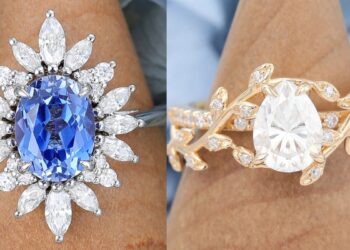As the sunshine rolls back in, it’s time to head down to the beach to bask in the heat. However, as you pack your favorite sunhat and your Factor 50, have you thought about your sunglasses too?
While many of us see our favorite pair of sunnies as the ultimate fashion statement, it could be time to take a closer look at them. As the UV index increases, it’s essential that your layers of protection do too. Sunglasses remain the number one most effective defense against ultraviolet light, so it’s time to make sure yours fit the bill.
Stick with us as we jump into the dangers of not protecting your eyes this summer and teach you how to test your own sunglasses’ defense level in a few easy steps.
The Dangers of Wearing Lenses Without UV Protection
Sunglasses remain essential in the fight to protect your eyes from harmful UV rays. If your lenses are UV coated, they are able to reflect UV rays while still allowing visible light to pass through.

Better still, for those of you planning to spend time near the water, polarised sunglasses take eye protection one step further, blocking both UV rays and the glare from reflective surfaces like the ocean, a lake, or a swimming pool.
“UV radiation, whether from natural sunlight or indoor artificial rays, can damage the eye’s surface tissues as well as the cornea and lens,” says ophthalmologist Michael Kutryb, American Academy of Ophthalmology spokesperson. “Unfortunately, many people are unaware of the dangers UV light can pose. By wearing UV-blocking sunglasses, you can enjoy the summer safely while lowering your risk for potentially blinding eye diseases and tumors.”
Worse still, being overexposed to harmful UV rays also increases your chances of Age-related macular degeneration (AMD) and can break down your vision over time.
If you opt for sunglasses without the CE or UV400 mark, this could suggest that they are not protective against harmful UV rays.
The question is, why does UV light put our eyesight at risk?
What Are UV Rays?
UV rays can affect our eyesight in a number of ways. With the ability to burn our eyes in the same way as our skin, UV ray exposure increases risks of eye-based melanoma, cataracts, and even blindness.

Did you know that there are actually three types of harmful UV light to watch out for? Investing in the right pair of specs should mean you are protected from:
- UVA: These are the most common form of UV light, making up a whopping 95% of all UV rays absorbed by our eyes and skin. These are also the most harmful and can rapidly increase eye-related aging and your chances of developing skin cancer.
- UVB: These are the second most common form of UV rays, which make up the other 5% of the sunlight our eyes absorb. UVB exposure tends to be the most common cause of sunburn.
- UVC: UVC rays carry the least dangers, as they are burned off on entrance to the atmosphere. While many suncare brands sell you products with ‘UVC’ protection, this form of UV exposure presents little to no risk to your eyes and skin.
So, how can you ensure that your favorite pair of sunglasses is doing its job in blocking harmful UV rays? Let’s find out.
How To Detect If Your Specs Have UV Defence
Before you run out to the shops and purchase a new pair of sunglasses for the summer season, take a step back and review your current pair of sunnies.
The first and most common way to check your sunglasses is to review their frame features. Each pair of protective sunglasses should be manufactured with a CE or UV400 mark. This is either found on the frame itself or on a sticker in the top corner of the lens.
If your sunglasses are slightly older, however, there are still plenty of ways to test their protective barrier right from the comfort of your couch. All you need is a UV light and a dollar bill.
When in front of a UV light, you are able to see the built-in security codes built into a banknote. Test this before you put your lenses in front to confirm whether you’re working with a genuine UV light.
Once confirmed, simply place your lenses between the banknote and the UV light, shining your flashlight through the lens. If your sunglasses offer significant UV protection, you should no longer be able to see the security details on the dollar bill.
Testing your sunglasses as we approach the summer season is essential. If you want your eyes to remain healthy while still rocking a summer style, UV-protected lenses are your new best friend.




